One of the more bizarre bits of drama that was going down in the Japanese game industry recently was the situation with developer/publisher Imageepoch. The CEO, Ryohei Mikage, had vanished without a trace, the company’s social media accounts went silent (or disappeared entirely), and the company’s latest game, the 3DS RPG Stella Glow, was wholly acquired by Sega1. Speculation over the health of the company ran rampant, and the rumors were confirmed earlier this month with the company’s filing for bankruptcy in Tokyo court.
(Even now, nobody knows Mikage’s whereabouts. I sincerely hope he’s okay…)
Imageepoch was an interesting company – it was built as an independent RPG development studio by the aforementioned Ryohei Mikage, a young developer and entrepreneur who had seen a fair bit of success in spite of his relatively young age. Over the course of the company’s life, he was able to lure big-name talent away from companies like Square-Enix, Namco Tales Studio, and Atlus in the hopes of turning Imageepoch into a RPG creating powerhouse – even going so far as to launch a label called “JRPG” in hopes of being seen as the future bearers of the genre. But obviously, things didn’t go quite as planned, and a little over a decade after their founding Imageepoch is no more.
I sat down with fellow Japanese game enthusiast Elliot Gay – formerly of Japanator and currently running his own import-centric site, Doki Doki Kusoge – to talk a bit about the life and times of Imageepoch. We’d both had quite a bit of experience with the company’s output: I’ve reviewed pretty much every English language release of their titles, while Elliot has spent a lot of time with the Japanese-exclusive releases. In this article, we take a look back together and remember Imageepoch’s brief, occasionally interesting, but mostly disappointing life and output.
Heidi: So I guess the big question – besides “Did Imageepoch make anything good” – is “what the hell happened?”
I’ll start by bringing up a few points: Ryohei Mikage was very young and had a great deal of career success before founding Imageepoch, two points he liked to harp on during interviews and press events. (Which, I should note, people didn’t seem to find particularly endearing – it seemed more arrogant than anything.) It makes me think of the young, starry-eyed indies who launch a project Kickstarter, are amazingly successful, and then proceed to overextend themselves and their surplus of funds and wind up with nothing to show but a bunch of angry investors.
In other words, I suspect that Mikage rode high on Imageepoch’s early success only to completely blow it down the line. But how did he do that?
Elliot: I feel like there’s definitely a beginning, middle, and end to this story that one could slice into easily recognizable pictures. There’s no doubt that Ryohei Mikage’s youth brought a lot to the table. He was energetic, confident, and certainly wasn’t shy about his ambitions. At the same time, it’s kind of easy to see why. He had managed to bring an impressive amount of talent into IE.
Up through 2010, Imageepoch was getting strong contracts from a wide variety of publishers such as Marvelous, Sega, and even Capcom.
There was undoubtedly a lot of promise, even despite the handful of misfires in the early years.
Heidi: That talent didn’t really seem to stick around, though. Kazuya Niinou was their biggest hire, and he left in 2012, one year after the big “JRPG” push. He didn’t leave for a sure thing, either: he joined Square-Enix to help rescue Final Fantasy XIV, which came off of a flaming trainwreck of a launch. I feel like he either got a killer deal from Squeenix or was becoming dissatisfied with something(s) about IE. Possibly both! I’m not sure if Hiroyuki Kanemaru stuck around until the end, but it wouldn’t shock me if he bailed early, either.
Speaking of contracts… One of the rumors apparently going around on places like 2ch is that Mikage may have been thinking he was going to score a big contract with Nintendo – including assisting with new Fire Emblem titles – and put his eggs in that basket. Backing it up is that IE is credited on Yoshi’s New Island with character modelling assistance. Not really what you think of as their forte, but they’re in there. So it seems like something of a feasible rumor… but even if there is truth to it, it clearly didn’t pan out.
Elliot: You’re right, it didn’t stick. Having Niinou working on IE projects and having his name attached the company led to some fairly quality titles, but it seems to me that as soon as Mikage launched the JRPG brand, that’s when things all went south.
He set out to “save” JRPGs, and that’s when the quality of the games started to really drop. IE’s attempt at self publishing seemed like it might have had a bright future; early trailers for Tale of the Last Promise on the PSP looked great, with a wonderful gothic aesthetic, strong graphics given the system, and some interesting game mechanics. The end product ended up being less than desirable, and I think that bad word of mouth carried forward throughout the subsequent handful of games.
Regarding those rumors about Mikage’s possible plans, I find myself wondering what might have happened had that panned out. Early IE projects were almost entirely DS exclusive, but around 2010 everything seemed to jump ship to the PSP.
Heidi: Yeah, a lot of the Japanese blogs analyzing the situation mention that as well. That was about the time the PSP was getting a huge shot in the arm thanks to Monster Hunter mania, and I think Mikage saw dollar… er, yen signs there.
The thing is, though, outside of some HUGE hits like MonHun Portable the PSP boom didn’t exactly translate into guaranteed sales. IE’s self-published best seller was the Black Rock Shooter game at about 130K, which I feel was more on the strength of the license at the time than the game’s quality. The others didn’t do nearly as well. Interestingly, even though they inked a deal with NIS America for translation of all their titles, BRS is the only one of their PSP games to have seen a translation and release – and quite late, at that. NISA was a pretty solid PSP supporter, too.
One thing I feel may have hurt them was getting a lot of big names and then having the products turn out as substandard. Sands of Destruction/World Destruction was decent, but given who was involved with it it should have been leagues better. Same with things like BRS. Overall, their best work seems to have come from when they had oversight from another publisher like Marvelous, Capcom, or Sega. Of course, that doesn’t really explain Time and Eternity…
Elliot: It’s fascinating to me that IE wasn’t able to ride the PSP boom considering how many other smaller publishers managed to make their mark/stay alive thanks to it. Look to Falcom as an example of that: they jumped ship from the PC, and rode the tiny little machine to 100k+ software sales by the time the curtains closed. I guess that speaks more to the opportunities the boom gave quality games, versus what IE actually had to offer. Let’s not forget the misfire that was releasing their Tale of the Last Promise follow-up, Sol Trigger, the week before their big PS3 game, Time and Eternity.
Oh Time and Eternity…
I remember Mikage being so very vocal about how this project was going to amaze gamers all across Japan. Now you could actually play a living, breathing anime! Look, I’ll admit that even I was moderately excited at the premise, and I still think there’s something cool there. The reality is that IE was never the developer that was going to carry through on that promise. Things started to look suspicious when the release date was edging closer and closer and barely a few seconds of footage had been publically available. For something that was supposed to change the landscape of anime RPGs, Mikage sure was being quiet about it.
Heidi: Do you think it was one of those cases where the publisher and/or developer knows they’ve got a disaster on their hands but don’t have the money or time to fix it? That’s the vibe I got.
A lot of people seem to be assuming that Time and Eternity was the game that killed IE, but I doubt that – they had a major publisher in Bamco backing them up so the blow couldn’t have been nearly as severe as one of their self-published titles tanking. According to an article on Nico News, they owed debt as early as 2010, even though they were turning in profits shortly after. That was around the time they made their shift to the PSP.
Elliot: Considering how aggressive Bandai Namco is when it comes to marketing the games they publish, I’m sure they were well aware of the fact that Time and Eternity wasn’t coming together. They’re one of the biggest publishers in the country, and the fact that they were so quiet about the release speaks volumes. Even Mikage went radio silent on Twitter for somewhere around a month following the release of the game.
BRS sold well for them on the strength of the license at the time, but Mikage is on record for saying he wanted to hit 150k in sales for Tale of the Last Promise. IE’s remaining PSP releases never got anywhere close to that, so I can’t imagine that helped improve their money situation. Even a franchise that did well for them, 7th Dragon, ended up seeing a huge decrease in opening sales (7th Dragon 2020-II).
Heidi: We’ve mostly been talking about the company’s output in a negative light – either low sales or low quality – but honestly, most of IE’s output just hovered around mediocrity. They had great talent and great licenses – including otaku favorites like Fate, Super Sonico, and BRS – but the games were just kind of… there, for the most part. You had a few real stinkers like Time and Eternity, sure, but I think most of the dissatisfaction came from expecting things that were awesome and getting “ehhh, it’s okay” instead.
So here’s my question to you. What games do you feel best exemplified what Imageepoch was? I’d go with Fate/Extra as an example. A beloved series, a new scenario and script by Type-MOON scribe Kinoko Nasu, revamped character designs by artist ChanXco, and a big marketing push. Sounds pretty fantastic, and it’s a neat game… up to a point, at least. It’s grindy as hell at parts, which wouldn’t be so bad if the combat system wasn’t a horrible bastardization of Simon that penalizes you harshly when you guess wrong. It did well enough to get a sequel, Fate/Extra CCC, but I almost wonder if that sold more for the character designs than for the game itself.
Elliot: It’s true. IE primarily hovered around mediocrity, though I’d argue their JRPG label resulted in stuff closer to being outright bad than just ok.
Fate/Extra is an interesting example, because I actually liked that game a lot. Well, I liked everything around the dungeon and combat, and merely tolerated those other elements. As a fan of the Type-MOON universe, I enjoyed the narrative and characters, and the overall aesthetic too. The dungeons served as filler to the experience in that I didn’t enjoy them, but they also didn’t scare me away from the larger experience. I ultimately ended up feeling the same way about the sequel as well.
If Fate/Extra is sort of representative of IE as whole, I’d argue that The Last Ranker is what IE could have been.
Published by Capcom, produced by Minae Matsukawa (Breath of Fire, Ace Attorney), with character designs by Tatsuya Yoshikawa (Breath of Fire), music by Yoko Shimomura (Kingdom Hearts), and written by Kazushige Nojima, The Last Ranker was practically overflowing with talent. Kazuya Niinou was at the helm of this one, and despite its overall quality, it might actually be the most tragic of all of IE’s releases. For one, it was the closest that Breath of Fire fans would ever get to another game in that series. It also featured a similar kind of one on one combat that would go on to be used in BRS and even Fate/Extra. The core difference was that the following games would actually strip the system of all the mechanics that made it fun, resulting in those watered down versions.
The Last Ranker didn’t try for the same huge scale that other RPGs often do, but it was all the better for it. It was a small, shonen manga styled tale about a handful of characters trying to work their way up in the world.
I still consider it a huge shame that the game never got localized, especially due to its status as one of Capcom’s final traditional JRPGs.
Heidi: The most tragic thing about Last Ranker was that I’ve heard a localization was commissioned and completed, but never released. Hell, they even trademarked it! By that point I think most large publishers had given up on the PSP in the West and handed the market over to the smaller localization boutiques. They were probably holding their cards and hoping the Vita would fare better… which it hasn’t, sadly.
A lot of folks go to bat for Arc Rise Fantasia, which I reviewed for GamePro (rip) and found above-average, though not really spectacular. It’s got a solid combat engine and a general design/color scheme that practically screams “we’re trying SO HARD to look like a Tales game, please notice us, buying public!” It’s another case of promoting big names to sell the game, too: Yasunori Mitsuda was pretty hyped up, but from what I understand most of the other Procyon Studio crew did the majority of the game’s music. It’s got a lot of fans, though, and I can definitely see why – it just didn’t click with me quite as much.
The English localization, however, is absolutely not to be missed. Boy howdy, you haven’t seen anything this bad since SCEA’s efforts with Grandia and Star Ocean 2.
Elliot: I never cleared Arc Rise Fantasia, but I played a pretty significant amount of it in Japanese, and a small chunk in English. I can certainly vouch for the… ‘quality’ of the English localization, which ultimately brings down what is a fairly solid little package. At the time, Wii owners didn’t have much in the way of JRPGs to fiddle around with, so Arc Rise Fantasia scratched that itch quite well. I can’t remember why I never got around to finishing it, but I certainly enjoyed what I played of it.
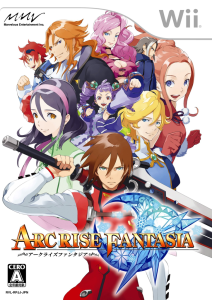 Another series folks seem to have a fair chunk of love for is Luminous Arc. I actually have zero background with those games, but apparently the franchise was good enough to warrant Marvelous holding onto the brand and making a new game in the series (Luminous Arc Infinity).
Another series folks seem to have a fair chunk of love for is Luminous Arc. I actually have zero background with those games, but apparently the franchise was good enough to warrant Marvelous holding onto the brand and making a new game in the series (Luminous Arc Infinity).
Heidi: Really? I’ve played the first and second Luminous Arc games – the third never got an English release for some reason, and I always wondered why, but maybe it’s because the series wasn’t really more than mildly entertaining. The original Luminous Arc is practically the dictionary definition of “generic strategy/RPG”, with a slow and not particularly deep battle system, bog-standard anime cliche characters, and a plot you can predict a mile away. I mean, is there ever a big church organization in these games that isn’t an evil front?
Luminous Arc 2 is a game I remember being a bit better in terms of storytelling, though the gameplay is still pretty basic. It’s pretty far down the list of SRPGs I’d opt to replay, given a choice. It’s also far more touched by the the ever-encroaching forces of moe than the first. You literally engage with female witch units for bonuses, complete with a splash image of them in a wedding dress. Yep.
Elliot: I think at that point IE was pretty consistent in making average to good games, for the most part. Things really went bad when they introduced that hilarious JRPG label alongside that equally as funny promotional video talking about how they were going to save the genre.
Save the genre that’s not dead, eh? Good luck with that, Imageepoch.
The first game to come out of this brand new movement was Tale of the Last Promise, a game that had looked good in trailers, but ended up being a brief, poorly written, broken experience. The following self-published games never really escaped that standard, either.
Heidi: Wasn’t Tale of the Last Promise basically a “stay tuned for Sol Trigger, coming soon!” type deal, and people were righteously pissed about it?
The most high-profile game from the whole “JPRG” label nonsense was Black Rock Shooter, which they teased for quite some time beforehand. I’ve only ever played that game and not Last Ranker, but you seem to imply that it’s basically a similar combat system with a big downgrade.
While the game sold decently, it didn’t seem to make waves. I personally found the Debbie Downer of a storyline to be… well, not what I wanted from Black Rock Shooter. The original huke illustrations and music video showcased a fascinating but enigmatic world I wanted to see more of, and the game offered none of that, instead focusing on the extinction of mankind and a lot of talk about cloning and blarrrrrrgh.
Elliot: It was sort of the opposite. Sol Trigger was kinda played up as another original IP, but from what I gather, it ended up sorta being a spiritual/direct successor to TotLP in disguise. Whoops.
And yes, BRS took the basic idea, one on one real time battles, and sucked everything good about the system out.
But hey, at least we got a beautiful Ufotable animated opening, right?
Heidi: But we get that in Tales games now! It’s not as special anymore.
So in the end, do you think Imageepoch has left any lasting impression on the Japanese game industry, or are they just another developer that had fleeting success and will be mostly forgotten?
Elliot: I think it’s important to look back on them and see where they went wrong, and where they found success. For all their failures, I respect that they at least tried to move the genre forward in their own weird way. And hell, we got Seventh Dragon and The Last Ranker out of it, so I guess I can’t complain too much.
Heidi: I guess that leaves the question – is Idea Factory the true face of the JRPG going forward?
Elliot: Don’t even joke.
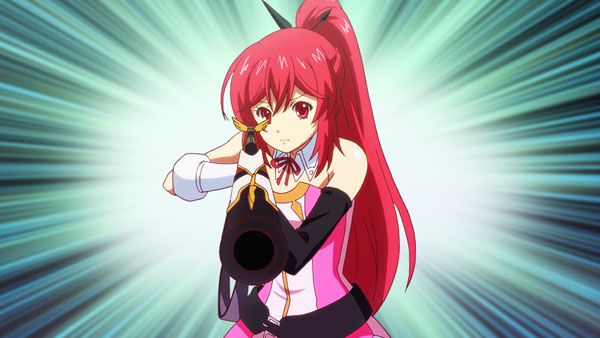


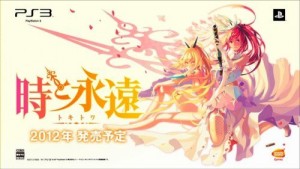


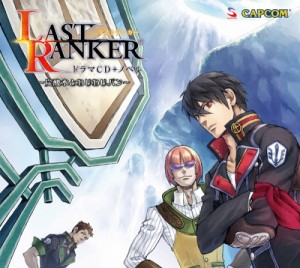

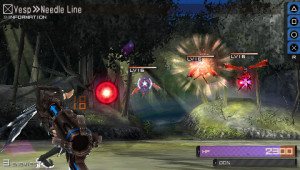

Its a shame though. I never heard of Imageepoch but after Stella Glow and 7th Dragon I felt Imageepoch could’ve been something big but they pushed their luck.
I agree with you Ace. I bought Stella Glow and it’s freaking amazing. Really. I’ve already bought the last game to 7th Dragon for the 3DS. Wish they were able to make a few more 3DS titles to prove themselves.
Same. After I finished Stella Glow I look up Imageepoch’s games and they only did that seemed good was 7th Dragon
late but he has been found and made a new games company focusing on mobile Mikage